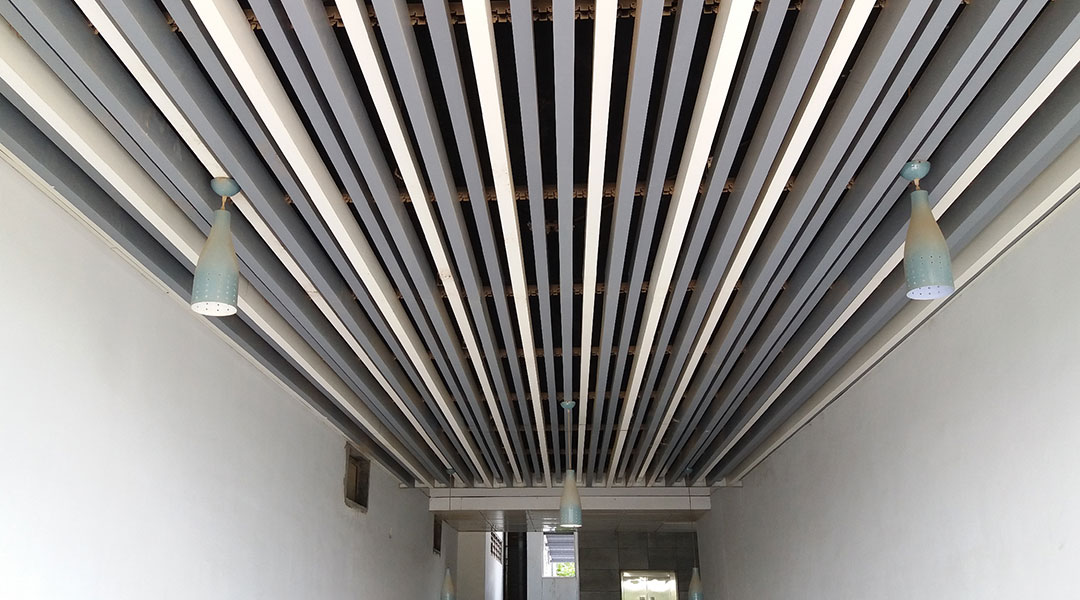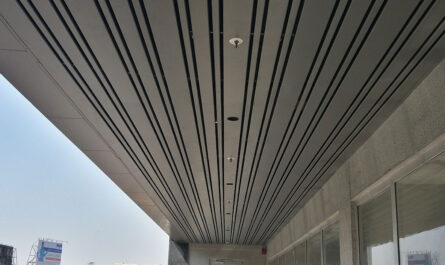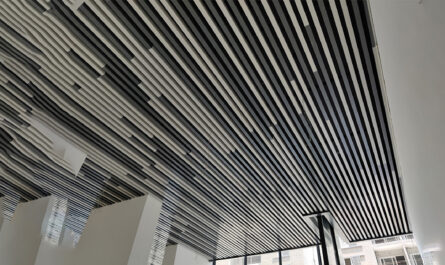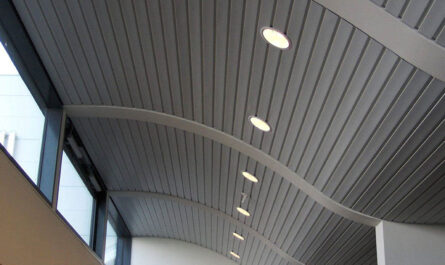Metal ceilings have gained popularity among homeowners and business owners alike due to their durability, aesthetic appeal, and versatility. This guide explores the top five best practices for installing metal ceilings, ensuring that your project is executed flawlessly. From selecting the right material to maintenance tips, this comprehensive article offers valuable insights for anyone considering a metal ceiling.
Best Practice 1: Choosing the Right Type of Metal Ceiling
1.1 Understanding Different Materials
When choosing a metal ceiling, it’s crucial to understand the various materials available. Common choices include aluminum, steel, and copper. Aluminum is lightweight, resistant to corrosion, and easy to install, making it a popular choice for residential and commercial spaces. Steel, on the other hand, offers robustness and is suitable for areas that require additional strength. Lastly, copper adds a unique aesthetic appeal but can be more costly and requires specific care.
1.2 Evaluating Aesthetic Options
Metal ceilings come in a variety of designs and finishes, allowing for customization to fit your interior decor. Options like brushed, polished, or painted finishes can dramatically change the look of a ceiling. Additionally, patterns, such as tiles or panels, provide further aesthetic options, enabling homeowners and business owners to create a signature style that enhances the overall ambiance.
1.3 Considering Acoustic Properties
While metal ceilings are often admired for their sleek appearance, their acoustic properties are equally important. Depending on the thickness and design, metal ceilings can reflect sound, which may not be ideal for all spaces. It’s advisable to consider acoustic ceiling tiles or add insulation to minimize noise levels, especially in high-traffic areas. Selecting materials with sound-absorbent qualities can strike the right balance between aesthetics and functionality.
Best Practice 2: Pre-Installation Planning
2.1 Assessing Ceiling Height and Space
Before installation, evaluating the existing ceiling height and overall space is essential. Measuring the height helps determine the best type of metal ceiling and whether additional modifications are necessary. Moreover, understanding the space’s dimensions ensures that the installation is proportional and aesthetically pleasing. This assessment will also aid in determining the amount of material needed and identifying potential obstructions.
2.2 Creating a Detailed Installation Plan
A detailed installation plan is key to a successful project. This plan should include a step-by-step outline of the installation process, timelines, and team roles if more than one person is involved. Additionally, consider potential challenges, such as working around existing fixtures or structural elements. A well-thought-out plan not only streamlines the installation process but also anticipates issues that may arise, making troubleshooting easier.
2.3 Gathering Necessary Tools and Materials
Having the right tools and materials at hand before starting the installation can prevent delays and complications. Essential tools include a level, measuring tape, power drill, and safety equipment, such as goggles and gloves. Additionally, compile all necessary materials, including metal panels, grid systems, and fasteners. Preparing in advance leads to a more efficient installation, allowing for a smoother workflow.
Best Practice 3: Proper Measurement and Layout
3.1 Measuring the Installation Area
Accurate measurements are foundational for a successful metal ceiling installation. Start by measuring the length and width of the area where the metal ceiling will be installed. It’s crucial to account for any irregularities in the existing ceiling, such as slopes or protrusions. Accurate measurements will ensure that each panel fits perfectly and that no additional material is wasted.
3.2 Marking Reference Lines
Once measurements are complete, marking reference lines on the walls and existing ceiling will serve as a guide during installation. These lines help maintain consistent heights and ensure that all panels align correctly. Using a chalk line or laser level can provide a clear and straight reference point, making the installation process more efficient and precise.
3.3 Ensuring Level and Square Layout
Verifying that the layout is level and square is critical before securing the panels. An uneven installation can lead to a visually unappealing result and may cause issues with functionality in the long run. Using a level to check every section of the layout will guarantee that everything is installed correctly, preventing potential complications during and after the installation process.
Best Practice 4: Installation Techniques and Methods
4.1 Securely Attaching Metal Panels
The method of attaching metal panels significantly impacts the overall quality of the installation. It’s essential to follow the manufacturer’s guidelines for fastening methods, which typically involve screws, clips, or a grid system. Each type of attachment has its advantages, and selecting the correct one based on the ceiling design and panel type is crucial for a secure and long-lasting result.
4.2 Managing Seam and Joint Alignment
Proper alignment of seams and joints is vital for achieving a clean and professional appearance. Careful attention should be paid during installation to ensure that panels fit snugly together without gaps or misalignment. This attention to detail not only enhances visual appeal but also helps prevent issues like sagging or loosening over time.
4.3 Incorporating Lighting and Ventilation
Integrating lighting and ventilation into the metal ceiling design can enhance functionality and aesthetic appeal. Consider planning for recessed lighting or fixtures that complement the metal ceiling’s design. Additionally, ensure that any air vents are properly installed and aligned with the ceiling grid to maintain airflow without compromising the ceiling’s overall look.
Best Practice 5: Maintenance and Care for Metal Ceilings
5.1 Routine Cleaning Guidelines
Maintaining the appearance of metal ceilings requires routine cleaning. Dust and debris can accumulate over time, making the ceiling appear dull. Regularly dusting with a soft cloth or using a vacuum with a brush attachment can keep the surface looking fresh. For deeper cleaning, a mild detergent mixed with water can be used to wipe down the panels, ensuring no harsh chemicals that could damage the finish are applied.
5.2 Addressing Rust and Corrosion
While many metal ceilings are treated to resist rust and corrosion, it’s essential to monitor for any signs of deterioration. If rust appears, it should be addressed immediately to prevent further damage. Light surface rust can often be removed with fine steel wool or sandpaper, followed by repainting or applying a rust-inhibiting primer to restore the surface’s integrity.
5.3 Periodic Inspection and Repairs
Conducting periodic inspections of the metal ceiling is crucial for long-term maintenance. Look for any signs of sagging, discoloration, or damage. Early identification of issues allows for prompt repairs, ensuring the ceiling remains in excellent condition. Regular maintenance not only prolongs the life of the ceiling but also maintains its aesthetic appeal over time.
Conclusion
In conclusion, installing a metal ceiling requires careful consideration and attention to detail. From selecting the right material to understanding the installation process and maintenance, the practices outlined in this guide equip homeowners and business owners with the knowledge to execute a successful project. By following these best practices, you can achieve a stunning and durable ceiling that enhances your space.
FAQs
- What are the benefits of metal ceilings?
Metal ceilings offer several advantages, including durability, easy maintenance, and aesthetic versatility. They are also resistant to moisture, making them suitable for areas prone to humidity, such as kitchens and bathrooms. - How do I choose the right metal ceiling for my space?
Consider factors such as material, design, and acoustic properties when selecting a metal ceiling. Evaluate your space’s style and functionality to choose a ceiling that complements your decor while meeting practical needs. - Can I install a metal ceiling myself?
While some homeowners may feel comfortable undertaking the installation of a metal ceiling, it requires specific skills and tools. If you’re unsure, hiring a professional can ensure a proper and safe installation. - How do I maintain a metal ceiling?
Regular cleaning with a soft cloth and mild detergent, along with periodic inspections for rust or damage, will help maintain a metal ceiling’s appearance and longevity. Addressing any issues promptly is key to preserving its condition. - Are metal ceilings acoustically effective?
Metal ceilings can reflect sound, so their acoustic effectiveness depends on the design and material used. For spaces requiring sound absorption, consider incorporating acoustic panels or insulation.




